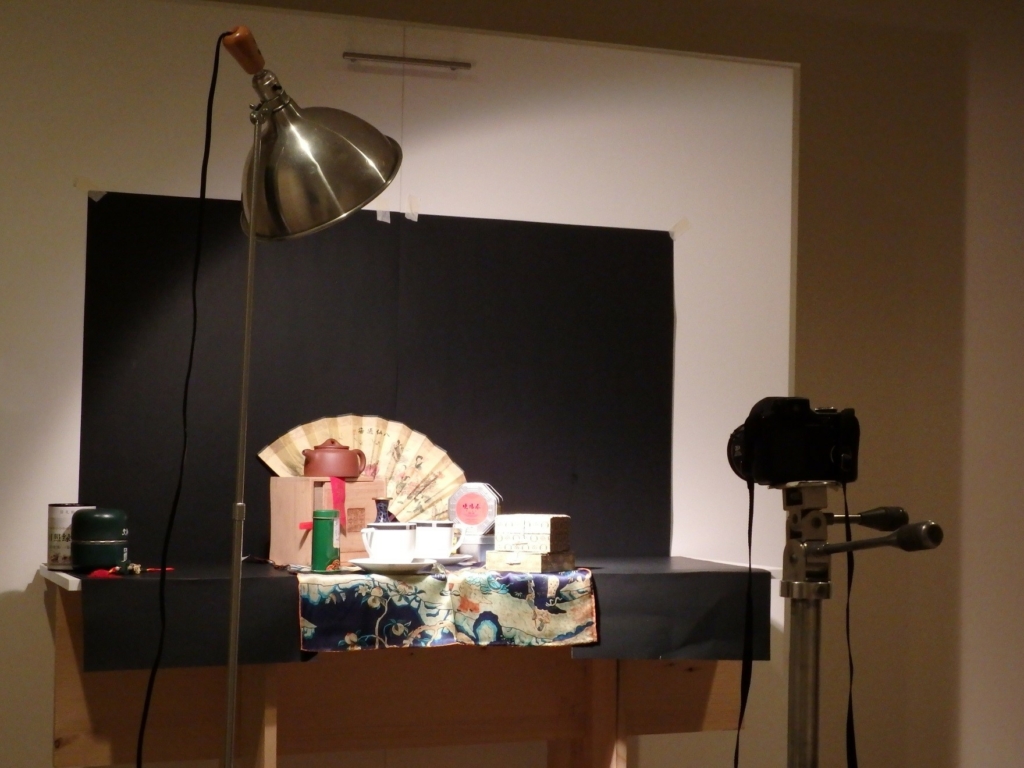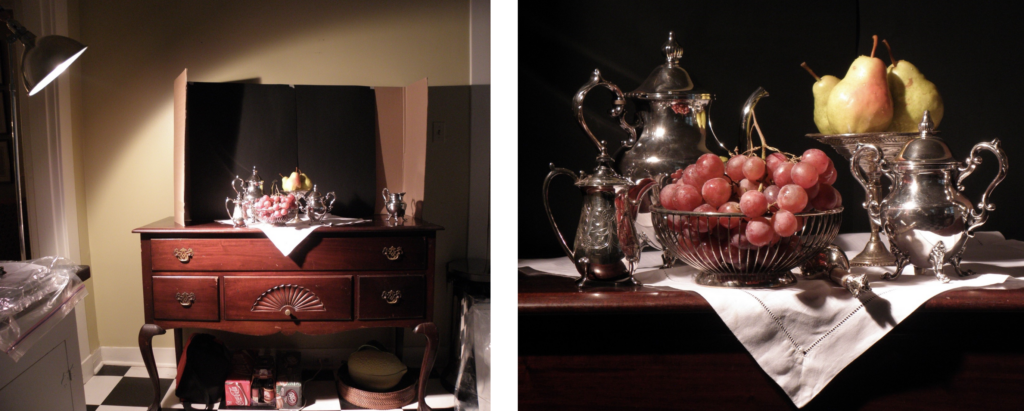For about 15 years, I have been doing commission work – painting a specific subject that has been requested by a client. When I’ve talked about it with my watercolor friends, many have wrinkled up their noses and said that they tried doing a commission once, it was a miserable experience and they’d never do it again. But I have found it to be a rich and rewarding painting experience – here are some key factors that contribute to my success.
Offer something unique
I have developed my own specialty, in terms of what I can offer my clients. I prefer to paint still life with watercolor, in a style that is greatly influenced by the Dutch and Flemish artists of the 15th and 16th centuries. So when it comes to my commission work, I paint the client’s collection of objects in this same style. I have found many people who own wonderful collections of silver, crystal, and other art objects (such as this lovely assortment below). At some point their collections may be sold, donated to a museum or given away to family, so my painting often becomes a cherished keepsake.
Target prospective clients
One way that I obtain commissions is by advertising in magazines that are read by people who collect art or who share my painting subject interests. Fine Art Connoisseur, Art in America and Garden and Gun are a few examples. I’ve even advertised in Hemispheres, an airline in-flight magazine. Sometimes I get requests from people who have been to one of my gallery shows or have read about my work in a fine art publication.
Building rapport with each client right from the start makes the rest of process much easier and more pleasant. I’ve had the good fortune to meet some very interesting and engaging people! These relationships also become the best source for new assignments via word of mouth referrals.
Clarify the project’s scope in advance
The subject, size of the painting, and the price point should be agreed upon in advance. First we discuss what they want me to paint, to ensure it’s something I can take on, given my specialty and my overall schedule. As for size, I don’t paint small watercolors. I usually create a full sheet painting or larger. I have done some elephant-size paintings for homes with very tall ceilings!
I usually charge clients 10-20% more than my gallery price for a similar painting. I offer a discount for a second painting ordered at the same time. One reason commission work is considered profitable is because you’re selling direct without gallery fees. I don’t ask for a deposit because if for some reason they reject the final work, I can place it for sale in a gallery. But I’m pleased to report that, to date, no one has rejected one of my paintings.
I send them a portfolio of relevant previous work with a cost projection, along with specifics about what I will need from them. Costs often include travel and overnight accommodations in addition to art materials and photography. Once they approve the costs and details, I pack my equipment and go to their location for a photo shoot.
Involve the client in the process
Doing a photo shoot in the client’s home can be tricky, but it’s an important way to involve them in the creation of the painting. I usually need a dark room in order to light the subject properly, which means taking over a bedroom or even the kitchen or living room. Together we might block some windows or move furniture around. Later when I review the photos on my computer to determine which ones will make the best watercolor, I usually select three that I would like to paint. I crop them and adjust the contrast to best represent how the finished painting will look. I send these three images to the client, describing what I like about each one, so they can choose their favorite. This a key step to gain the client’s buy-in for the final painting.
As I complete each element of my painting, I send a progress photo to the client so they can better understand my creative process. They really enjoy seeing “behind the scenes” and they love the painting more and more with each step. I don’t send them the absolute final stages of painting though – I want them to be surprised and delighted when they receive the physical painting.
Many of my clients have said what a fun adventure it was to work with me in creating their special painting.
Take professional photos
To take photos of still life set-ups, on the road and in my studio, I use a digital camera with a 42x optical zoom on a heavy-duty tripod. I have 4’ square sheets of white cotton and black velvet on hand if a neutral background is required. I also have a few large sheets of black construction paper and white card stock. I use a mid-range telephoto setting, which assures that the objects will be straight up and down. With wide-angle settings, the objects can appear out of shape.
For lighting, I use an ML-Direct Plus Method Light in a screw fixture, mounted on a tripod light stand that will extend to 5 feet. This versatile fixture has a remote control to easily adjust for brightness and temperature. You only need one light source to illuminate a traditional still life, which should be placed so the objects are lit from the left. If I need some light fill on the right, I position a sheet of white card stock to bounce the light over.
Deliver or ship the painting safely
I love to deliver a painting in person so I can see my client’s face when they first see it. When personal delivery is not an option, then I usually place the painting in a large, clear glassine envelope, then roll it into a heavy tube, which is cheaper and safer than shipping flat. The client can unroll the painting, keep it in the envelope, place it face down on a table overnight with a few magazines for weight and it will be flat in the morning.
I include my invoice, index sheets of the process photos that I had emailed to them, plus a printed photo of the finished painting in the shipment. I find that many clients like to keep these printed images near where the painting is hanging to show others how the painting was created.
I find doing commissions to be challenging, fun, and lucrative. In addition to making some new friends, I’ve been able to photograph and paint some beautiful and interesting objects which otherwise I may have never seen.











